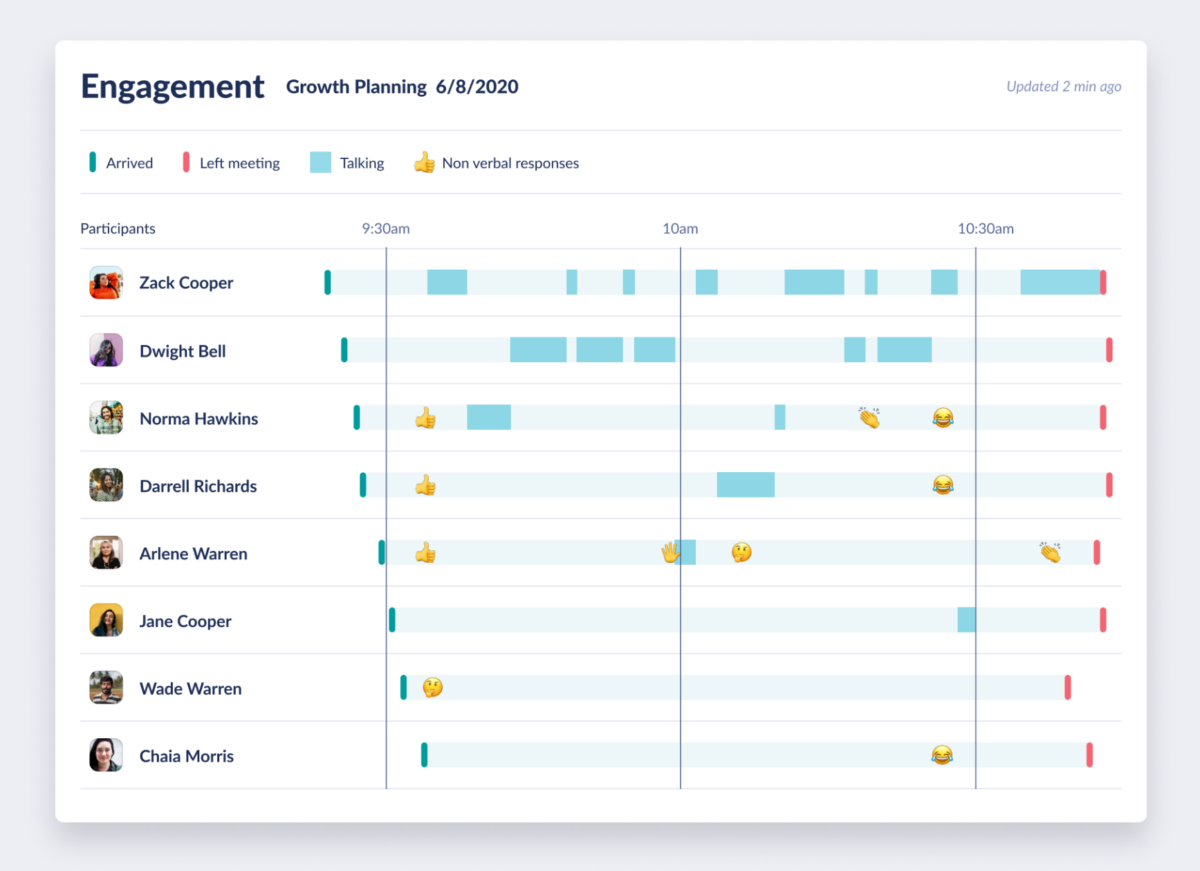If you’re planning a virtual college class reunion, it’s common to face a few initial questions:
- How can you adapt an in-person class reunion for an online audience?
- What does a typical virtual college reunion agenda look like?
- What activities take place during an online class reunion?
Drawing from examples from leading universities with the most robust alumni networks in the U.S., we’ve gathered the essential virtual college reunion activities and additional fun ideas to help you create a complete experience that will truly impress your alumni.
Essential Elements of a Virtual College Reunion Agenda
Your virtual college reunion schedule should include a variety of activities throughout the day and into the night to appeal to the range of alumni reunion goals and expectations.
Some alumni will want a family-friendly experience and the opportunity to show their children or loved ones their alma mater. Others will want high-energy, adult-oriented activities focused on reliving the excitement of college, and reconnecting with the people who made those years special.
When MIT hosted its first alumni reunion with Frameable Events in December 2021, it found that small group conversation space with themed conversations starters were essential for providing an ideal alumni experience.
The best way to understand your alumni expectations and maximize your potential attendee satisfaction is to survey them ahead of the reunion to understand what sort of activities they are or are not interested in. We share a few essential pre-reunion survey questions in this overview of planning a virtual reunion.
Generally, though, there are a few core elements of college reunions that your planning committee should at least consider adding to your reunion agenda during the mornings and afternoons:
- Welcome Address: Start your virtual class reunion with a welcome address from a member of your planning committee or a notable member of your university leadership. This is an opportunity to greet attendees, explain what they can expect during your reunion, and ultimately set the tone for the rest of the event.
- Alumni Spotlight Conversations: Feature notable alumni or group alumni based on current role or industry to discuss their work and their views on how their world of work is changing. This can help your attendees connect with other alumni who now work in similar fields, offering invaluable professional networking opportunities.
- College Leadership and Faculty Remarks: Host speeches, panel discussions, or informal fireside chats with key leadership members from the university, including the president, vice president, dean, or your student body leaders. These can involve inspirational or thought-provoking discussions (in the style of a TED Talk), an examination of current world events or trends, or a speech that celebrates the class and its accomplishments.
- Current Student Remarks: Spotlight current students and their stories to help alumni understand how the university is creating opportunities for its students to thrive, and how they can help those efforts.
- Identity and Faith-Based Discussions: Provide open networking spaces or coordinate a discussion of topics related to gender, race, identity, or religion (as appropriate).
- Remembrance Ceremony: Honor the deceased members of your collegiate community with a special program. Consider including a photo slideshow and offer dedicated rooms for alumni to openly grieve those that they have lost.
To better understand how you can approach each of these agenda elements, check out these virtual class reunion agendas from Cornell, Smith College, and Amherst College.
8 Virtual College Class Reunion Activity Ideas
The above essential elements of a college reunion are just one piece of your schedule. You will also want to layer in fun activities and networking areas that allow your alumni to freely connect with one another throughout the event.
Include these fun college class reunion activities to keep the energy high during your event and break away from more structured talks:
- Breakout/Open Networking Rooms: Your alumni are excited to reconnect, and a virtual environment is ideal for enabling guests to hop in and out of rooms at their leisure. Select a virtual event platform that allows you to create small group breakout rooms, ideally with a thought-starter prompt. These can include questions like “What Restaurants Do You Miss” or “Favorite College Memory,” or instead use categories like “Sports Fans,” “Greek Life,” “Now Based In [State or Region],” or “[Dorm or Residence Hall].”
- Campus Tour: What is new on campus? What little-known facts can you share? Pre-record a campus and community tour, or take attendees on a live tour of select locations. This campus tour video from D’Youville or this from Williston Northampton shows how you can approach your tour.
- Fun Run: Encourage alumni to complete a fun run and submit their time with the alumni association. You can learn more about how to plan a virtual fun run in this walkthrough.
- Game or Trivia Night: Host a variety of online card or board games, or coordinate a trivia night that focuses on the history of your college or fun facts about your graduating year.
- Happy Hour Or Wine and Paint: Offer an open happy hour networking time, or add structure by turning it into a “wine and paint” or similar activity. To elevate the experience further, mail your attendees cocktail mixes to try, or a themed paint kit.
- Recipe Sharing: Appeal to the bakers and foodies in your alumni network by hosting a recipe sharing or how-to cooking or baking session. Mail supplies or grocery lists to alumni ahead of time so that they can follow along from home.
- Talent Performance: Let your class performers take the stage to sing, perform an instrument, or showcase some other talent that they have. These performances can be recorded ahead of time and streamed so that attendees can all watch and engage with each other.
- Yoga or Group Exercise: Allow your attendees to take a moment to unwind and recenter themselves in a yoga or similar group exercise class.
Remember to not pack your agenda too full to allow attendees to take part in one or more of these activities. Your reunion guests need ample time to network with each other and gain the full value that they can from your agenda. If you offer too many exciting activities, or don’t have time in the schedule set aside for these opportunities, your alumni will need to make tough choices on what main events to attend, and that could detract from their experience.
How To Delight Your College Online Reunion Attendees
With the core agenda elements set for your class reunion, your planning committee can now focus on the finishing touches that will turn a perfectly acceptable reunion into a truly outstanding experience.
Pre-reunion Engagement Opportunities
Ahead of the event, create branded hashtags to help alumni keep up with the latest information and join conversations about your reunion. Mail your attendees swag bags and other goodies to get them excited for the reunion. These can include class apparel or useful items like USB drives, as well as any items they’ll need for your reunion activities. And create virtual backgrounds for attendees to use during the event, like these alumni background examples from Stanford University or these from Williston Northampton School.
Keep the Momentum Going During the Event
During the event, include a playlist that features popular songs from your college years. Or, live stream a band or similar musician that performs covers of those songs. Further this trip down memory lane with a photo slideshow or video montage in an easy self-service area for alumni to revisit memories at their leisure.
After the Event
Once your event is over, there are a few final ways to provide value to your attendees. First, share a copy of your virtual photo album, campus tour, or other assets that your alumni may want to revisit. Ensure that they are aware of any social media community groups that they can join to continue engaging with one another after the reunion.
Finally, ensure that you conduct a post-event survey that can help inform future class reunions. Ask about each attendee’s overall satisfaction with the event, their favorite sessions or activities, and any ways that the experience can be improved.
Make Your Online College Reunion an Event to Remember
By hosting a mix of essential in-person college reunion activities and fun, online-friendly activities and networking venues, your alumni are more likely to have a fulfilling reunion experience.
Are you looking for a virtual event platform that can provide your attendees with a number of large and small group activity options? Learn more about how Frameable Events has hosted alumni events for some of the nation’s top universities.









